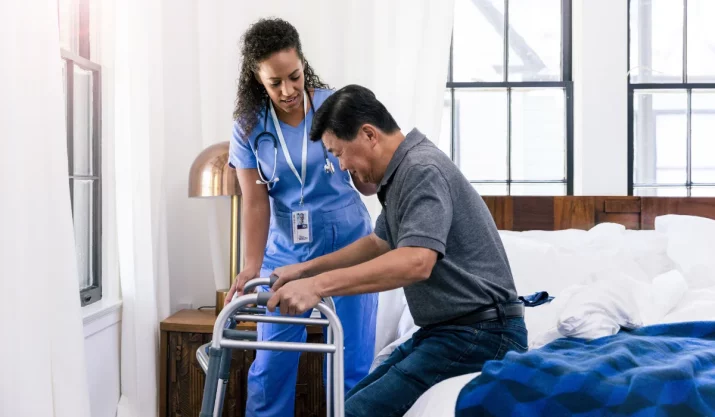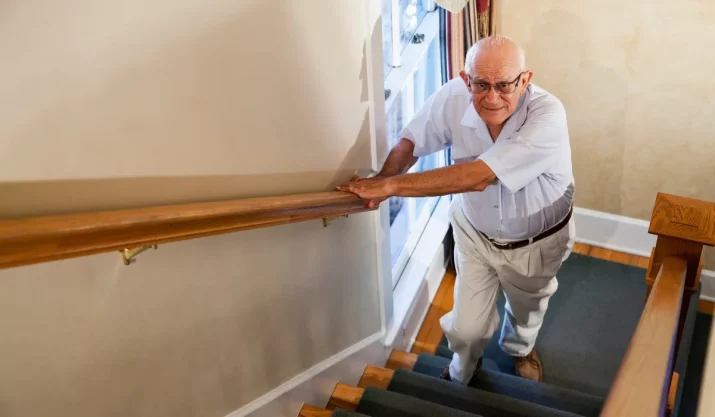What Causes Mobility Issues in Seniors? 7 Common Factors

Table of Contents
Getting around shouldn’t have to feel like a chore. But for many older adults in California, mobility limitations can creep up, affecting how well they move, how confident they feel at home, and how connected they are to their communities.
In fact, about 35% of adults over 70 report mobility difficulties, according to the National Institute on Aging. These challenges can significantly reduce independence and quality of life.
While mobility issues are a natural part of old age, they’re not inevitable. By understanding the most common causes, you or your loved one can take steps to maintain a higher quality of life and independence.
Let’s take a closer look at seven of the most common causes of mobility problems in seniors and how they show up in day-to-day life here in California.
Key Takeaways
- Muscle loss, chronic illness, and aging often lead to mobility issues that affect daily life for older adults.
- Neurological problems and medication side effects can make walking harder and increase the risk of falling.
- Poor diet, extra weight, and fear of injury can reduce activity and lead to even more loss of mobility.
- Home changes and support from California Mobility help older people stay safe and independent where they live.
1. Muscle Weakness and Loss of Strength
As people age, they naturally experience a decline in muscle mass and muscle strength. This reduction in strength often makes everyday tasks like climbing stairs or even walking in place more difficult.
Without regular physical activity or a strength training routine to get up and moving, this muscle weakness can become a serious impairment. This is especially relevant in California homes, where multi-story layouts or backyard steps are common.
Working with a physical therapist or following an exercise program that’s been approved by a healthcare provider can significantly help older people stay independent and prevent falls.
2. Chronic Conditions
Medical conditions like osteoarthritis, heart disease, and osteoporosis are among the most common causes of mobility issues in elderly people.
Osteoarthritis leads to joint pain and stiffness, while heart disease can cause fatigue that limits movement. Osteoporosis, which reduces bone density, raises the risk of fractures from even minor falls.
In areas like San Francisco or San Diego, where walking is a key part of daily life, managing these conditions with proper healthcare interventions and fall prevention measures becomes essential.
Family caregivers often play a crucial role in coordinating appointments and making sure that these chronic health issues are under control.
3. Neurological Disorders
Mobility limitations aren’t always about the muscles or joints. Neurological disorders such as Parkinson’s disease can affect gait, balance, and motor control.
Alzheimer’s and other forms of dementia can lead to wandering or confusion, increasing the risk of falls and making it harder to perform basic activities of daily living (ADLs).
Home care providers often work closely with occupational therapists to recommend changes like grab bars in bathrooms or the use of mobility aids like walking aids and canes. These assistive devices can restore some independence while helping to ensure safety.
4. Side Effects from Medications
Certain prescriptions, especially those used to treat high blood pressure, anxiety, or insomnia, can cause dizziness, fatigue, or confusion. These side effects are a significant but often overlooked contributor to falls and limited mobility.
That’s why routine medication reviews should be a priority, especially when multiple providers are involved in a senior’s care.
If you suspect your loved one is experiencing side effects that affect mobility, bring it up with a doctor or pharmacist.
In many cases, dosage adjustments or alternative treatments can reduce the risk.
5. Obesity and Poor Nutrition
Carrying extra weight can lead to joint problems, increase the strain on the heart, and decrease energy levels.
Poor nutrition worsens muscle loss and delays healing. These combined factors are major contributors to mobility problems and the eventual loss of mobility.
California offers plenty of resources to promote a healthy lifestyle, but not all older adults have equal access.
Seniors in more rural areas may have difficulty reaching grocery stores or accessing healthy food, which is why community-based programs and supportive caregivers are essential to keep nutrition and weight in check.
6. Fear of Falling and Psychological Barriers
The fear of falling can limit physical activity even when no fall has occurred.
This psychological barrier is common in older adults who’ve seen peers get injured or who live alone and worry about getting help in an emergency.
Unfortunately, less movement leads to reduced bone density and more muscle loss, making the fear a self-fulfilling prophecy.
Fall prevention strategies, such as installing handrails and using mobility aids like wheelchairs or walkers, can provide reassurance.
It’s also helpful to discuss these fears openly with family members or a healthcare provider so appropriate interventions can be made.
7. Unsafe or Inaccessible Home Environments
Finally, many seniors live in homes that weren’t designed with aging in mind. Loose rugs, narrow doorways, steep stairs, and slippery tile floors can turn even the simplest ADLs into high-risk situations.
In California, where much of the housing stock is older, environmental hazards are a frequent contributor to falls and mobility issues.
Fortunately, home modifications, like stair lifts, home elevators, handrails, and grab bars, can make a significant difference.
With help from occupational therapists or home accessibility experts, homes can be adapted to meet the evolving needs of older adults.
Regain Confidence and Comfort at Home
Mobility limitations don’t have to mean a loss of independence. Whether it’s helping a loved one remain safe on the stairs or recommending the right assistive devices, California Mobility is here to make life easier for older adults and their caregivers.
We offer professional guidance and top-quality solutions, like stair lifts, ramps, and in-home mobility aids, that support aging in place while reducing the risk of falls. If you’re looking for a trusted partner in home accessibility, you’ve found one.
Mobility challenges don’t have to mean giving up your lifestyle. Let’s make your home a safer, more comfortable place to age. Contact us now and find out how we can help.






